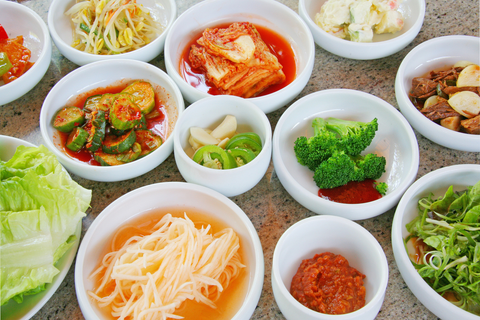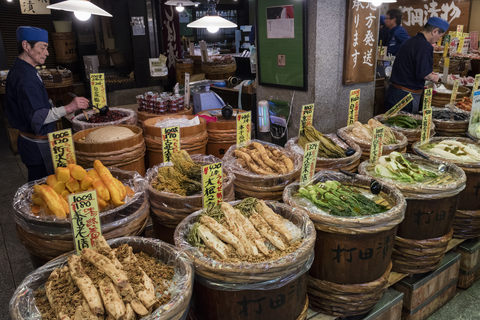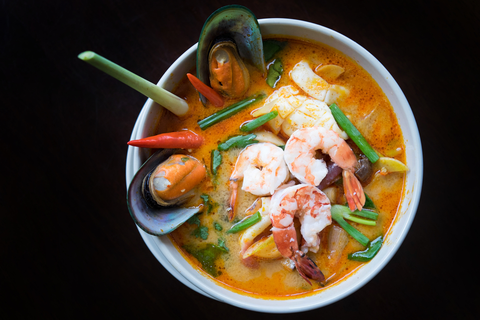Your Cart is Empty
Why Are Asians So Thin? 9 Simple Reasons That Keep Them in Good Shape

Are you feeling like a failure because of your weight? Your culture is partly to blame. We pick up the habits of the food scene around us, and there’s no denying that some lifestyles are healthier than others.
For instance, many Asian countries have low obesity rates compared to Europe and the United States,[1] even though most of the population doesn’t diet or follow rigorous exercise routines.
So why are Asians so thin? Let’s peel back the layers to find out.
Nine Top Reasons Why Asians Are So Thin
When it comes to staying skinny, Asians owe more credit to their traditional diet and lifestyle than to their genetics. Here are some of the ways that their food habits set them up for better health.
1. They Fill Up on Fruits, Vegetables, and Fish
Asian diets tend to be diverse, as they feature a wide variety of fresh fish and produce. Most meals contain a stewed vegetable in some capacity, and many dishes have more than three times as many greens as meat. Even snack foods tend to be veggie-filled; a favorite Japanese treat is onigiri, or rice balls wrapped in seaweed and tuna or vegetables.
2. Portions are Smaller

Buy a fast food burger in an Asian country, and you might be surprised by the size of your order. Portions are significantly smaller than you’ll get in the states, and skinny Asians tend not to go back for seconds.
Since studies have confirmed that reducing meal sizes is an effective way to trim fat or maintain a healthy weight,[2] it’s not surprising that smaller plates lead to a trimmer waistline.
3. Snacking is Discouraged (Especially in Public)
Do you find yourself always within reach of a snack during the day? That’s a western habit that might be leading to weight gain. In contrast, it’s considered rude to eat in public in many Asian countries, meaning that you’ll rarely see anyone eating at their desk or on public transportation.
And what do skinny people eat when they snack? In much of Asia, snacks tend to be nutrient-packed options like salted nuts or dried seaweed.
4. Desserts Aren’t as Sweet (or as Frequent)
Most Asian meals don’t end with dessert, and when they do, it’s nothing as sweet as our cookies, cakes, and ice cream in the US. Instead, desserts are based around fruit, rice, and even red beans so that overall sugar consumption stays low.
Likewise, soda is a lower priority. It’s hard to imagine a restaurant meal without a coke in the United States, but an Asian diet puts the focus on green tea instead. Not only does this cut down on sugar consumption, but Medical News Today states that green tea is flush with antioxidants and anti-inflammatory properties that keep your digestive system running smoothly.[3]
5. Asian Cities are Designed for Walking

The majority of Asian cities were developed long before the car, which means most were built with foot traffic in mind. Living in Seoul, Tokyo, and other major Asian cities means you will walk kilometers each day to get around (even to access public transportation). Though you might not think of walking to the subway station as exercise, those extra steps lead to more calories burned each day.
6. Rice is the Carbohydrate of Choice
Forget sliced bread most Asian meals revolve around rice instead. Rice is a non-toxic source of glucose that is less likely to irritate your gut than wheat,[4] and it’s also associated with a lower risk of cardiovascular disease. Though it still breaks down into sugar in your body, you get more nutrients per serving than with wheat, especially if you stick with brown rice.
7. Calorie Counting Isn’t Considered Important
Surprisingly enough, the Chinese language doesn’t contain a word for calories. It might sound counterproductive to not pre-measure your portion sizes, but adopting an Asian approach to your meals will help you view food primarily as positive nourishment, not something dangerous that you need to protect yourself from. This subtle change in mentality can make a significant difference in your weight.
8. They Emphasize Fermented Foods

Tofu, kimchi, and miso soup- that’s just a sampling of the fermented foods on traditional Asian diets. These foods are flush with healthy probiotics that add beneficial microbes to your belly, and their consumption is connected with weight loss, especially around your midsection.
Just how beneficial are probiotics for your body? Research from Harvard University reveals that these microbes can improve immune function, protect against hostile bacteria that could trigger infections, and improve your digestion and nutrient absorption levels.[5]
9. Ingredients are Often Steamed or Boiled
You’ve got the wrong impression if you think all Asian food is drenched in sauce or fried in an egg roll. In truth, a significant portion of Asian cuisine is served steamed, which keeps each meal’s nutritional content intact without adding extra calories. Research from Zhejiang University reveals that steaming broccoli is the healthiest way to eat it, so make your steamer basket one of your most-used kitchen tools to improve your health.[6]

Follow an Asian-Inspired Diet for a Better Body?
You don’t need to change your genetics to enjoy the health benefits of living a more Asian lifestyle. Adopting an Asian diet for weight loss is a good start.
However, weight loss goes far beyond an Asian lifestyle as researchers have recently revealed.
In fact, the problem of obesity has been traced deep into your gut flora and even your brain's state. An Asian diet will be pointless if you do not fix your gut health from its roots...
Click Here To Read Scientists' Latest Weight Loss Report
References:
1. https://renewbariatrics.com/obesity-rank-by-countries/2. https://www.theatlantic.com/health/archive/2011/10/very-small-portion-changes-can-lead-to-significant-weight-loss/245885/
3. https://www.medicalnewstoday.com/articles/269538.php
4.https://www.medicalnewstoday.com/articles/318699.php
5. https://www.health.harvard.edu/staying-healthy/the-benefits-of-probiotics
6. https://www.ncbi.nlm.nih.gov/pmc/articles/PMC2722699/
English
